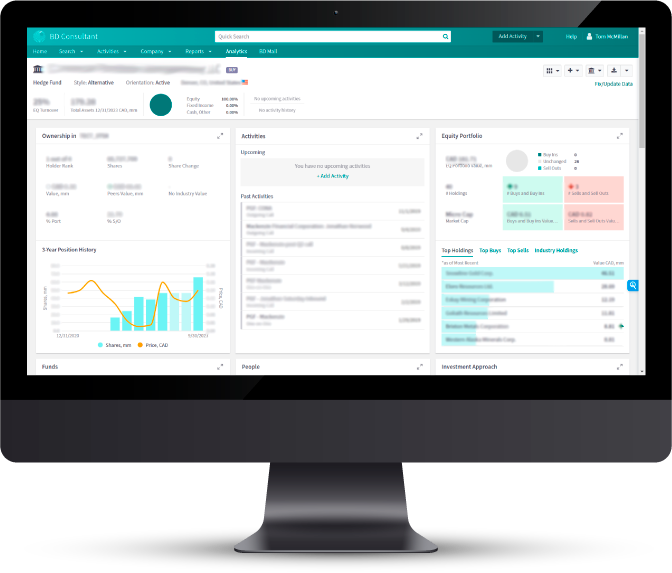Only scratching the surface of the capital markets?
Reach a deeper pool of investors
Read on to learn how to expand the pool of accredited investors and capital market professionals your company has access to through a credible investor targeting and digital engagement strategy
Strategic Investor Targeting and Digital Engagement
Strategic investor targeting and digital engagement is a four step process. It requires a robust investor targeting platform, rich non-promotional content that is relevant to the capital markets, credible digital channels, and a competent investor relationship management system. Once fully deployed, your company will be able to reach and engage with an entirely new cohort of accredited investors.
1
2
3
4

Strategic Investor Targeting
We recommend four different levels of targeting to capture key audiences in the capital markets.
Institutional targeting is based on:
- Cross peer ownership analysis;
- Quantitative analysis; and
- Thematic analysis.
Individual targeting is based on the demographic and geographic targeting criteria available within the digital channels you elect to use. If you need more information on this topic please follow the link.
Content Development
The impact of your investor targeting and digital engagement initiative is entirely reliant on the quality of the content you have to offer. The easiest approach here is to identify existing high value content that is relevant to the capital markets. This could be information about a recent innovation, progress on sustainability and ESG, recent product launches, etc. In the absence of existing content, the onus is on your team to develop clear, compelling and credible content that will inform investors and gain their interest without them feeling as though they are being overtly marketed to.



Campaign Programing
Campaign programming begins by applying your targets to the social media channels you have selected. Then you have to structure how your audience is going to engage with your content. Digital media campaigns come in three flavors: Passive, Active, and Hybrid. Each flavor has a use, and they all start with social media content that directs the recipient audience to a landing page. The difference is what happens once the audience reaches the landing page.
- Passive campaigns ask nothing of your audience in return for your high-value content. These are useful for creating awareness and attracting investors into your e-mail news alert.
- Active campaigns provides only teaser content and requires your audience to provide their credentials to access any high- value content.
- Hybrid campaigns provide only a portion of your high-value content for free, but offers the audience the option to provide their credentials to engage additional content or engage more directly with your company.
However you design your campaign, it is important to ensure you are able to track conversions and optimize your spending based on how your audience engages with the content.



